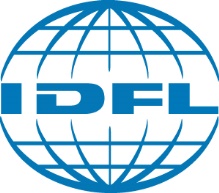Down & Feather Testing
Down and Feather Testing and Quality Assurance
The form for submitting down and feather samples can be found here.
Services
IDFL performs all major down and feather quality assurance services including testing raw and washed materials and finished products, collecting samples from factories or retail stores, inspecting finished products and consulting on testing and labeling standards. Services can be performed same-day for an additional fee.
Tests
What Is It?
Content analysis identifies the components of a down and feather sample.
How Is The Test Performed?
A specific weight of material is hand separated into component categories.
The test has two parts:
The first separation classifies larger components into the following categories: down with fibers, feathers, broken and damaged feathers, landfowl, and residue.
The second separation classifies smaller components from a sub-specimen of down and fibers category. The categories of the second separation are: down clusters, down fiber, feather fiber, landfowl fiber and any additional residue and tiny feathers.
What Do The Results Mean?
The content analysis report gives the percentages by weight of each component category. A sample report:
73.3% Down Cluster
7.2% Down Fiber
4.1% Feather Fiber
11.4% Waterfowl Feathers
1.5% Broken/Damaged Feathers
1.3% Landfowl Feathers / Fibers
1.2% Residue
Why Do It?
Governments and buyers require labeling of finished products. The component percentages are the basis of the product label. The various systems for labeling help consumers and manufacturers buy and sell different quality products in a fair and level marketplace.
What Is It?
The species analysis identifies the species of a feather or a down cluster. Most samples are tested for duck and goose species but other species including landfowl can be identified.
How Is The Test Performed?
After completing the Content Analysis test, 1g of feathers and 0.1g of down clusters are magnified and categorized. The magnification lets the analyst see characteristic nodes that identify the piece as duck, goose, or landfowl.
What Do The Results Mean?
The report lists the percentage by weight of each species identified.
A sample report is listed below:
92% Goose Down
8% Duck Down
87% Goose Feathers
8% Duck Feathers
5% Landfowl
Why Do It?
Governments and buyers require species identification in labeling of down and feather products. The cost of different species of down and feathers can vary greatly. Proper identification and labeling of species help consumers and manufactures buy and sell the correct product.
What Is It?
Color separation tests the amount of white and dark material in a plumage sample.
How Is The Test Performed?
A sample is hand separated into white, dark, and borderline colors. How white a piece is depends on how it compares to a grayscale level. Depending on requirements, the borderline category can be re-classified into white or dark material according to specifications.
What Do The Results Mean?
Percentages of white, dark, and borderline are reported. The percentages are based on weights.
For example, 99% white mean that 99% of the weight of the sample was classified as white.
Why Do It?
Many companies request only white material. Dark material that shows through fabric can dissuade a consumer from purchasing a product. The test gives a quantitative value of how much white material is in the plumage sample.
What Is It?
Average feather length measures each feather and then groups them by length.
How Is The Test Performed?
Three grams of clean feathers are individually measured and sorted according to length. The categories are 0.1 to 1.9 cm for 1 cm, 2.0 to 2.9 cm for 2 cm,3.0 to 3.9 cm for 3 cm, etc. Each category of feathers is then counted. The report includes a chart for each feather length group with the number and percentage according to count. The overall average feather length is also given.
What Do The Numbers Mean?
There are four different types of numbers – count, percentage of count, cumulative percentage, and average feather length. The count is how many individual feathers there are in the sample for that category. Percentage of count is the percentage overall that a category makes up for the entire sample based on the count. The cumulative percentage is a running percentage total starting from the smallest length category. The average feather length number is the average for all the feather length groups.
Why Do It?
There are many different types and sizes of feathers. Different products are better suited to certain lengths of feathers. Specifying the average length of a feather is important in order to provide a consistent product
Standards
IDFL tests down and feathers using the major global standards including EN (Europe), JIS (Japan), IDFB (International), GB (China), VSB (Switzerland), AS (Australia), USA 2000, KS (Korea), CAN (Canada) and CNS (Taiwan).

